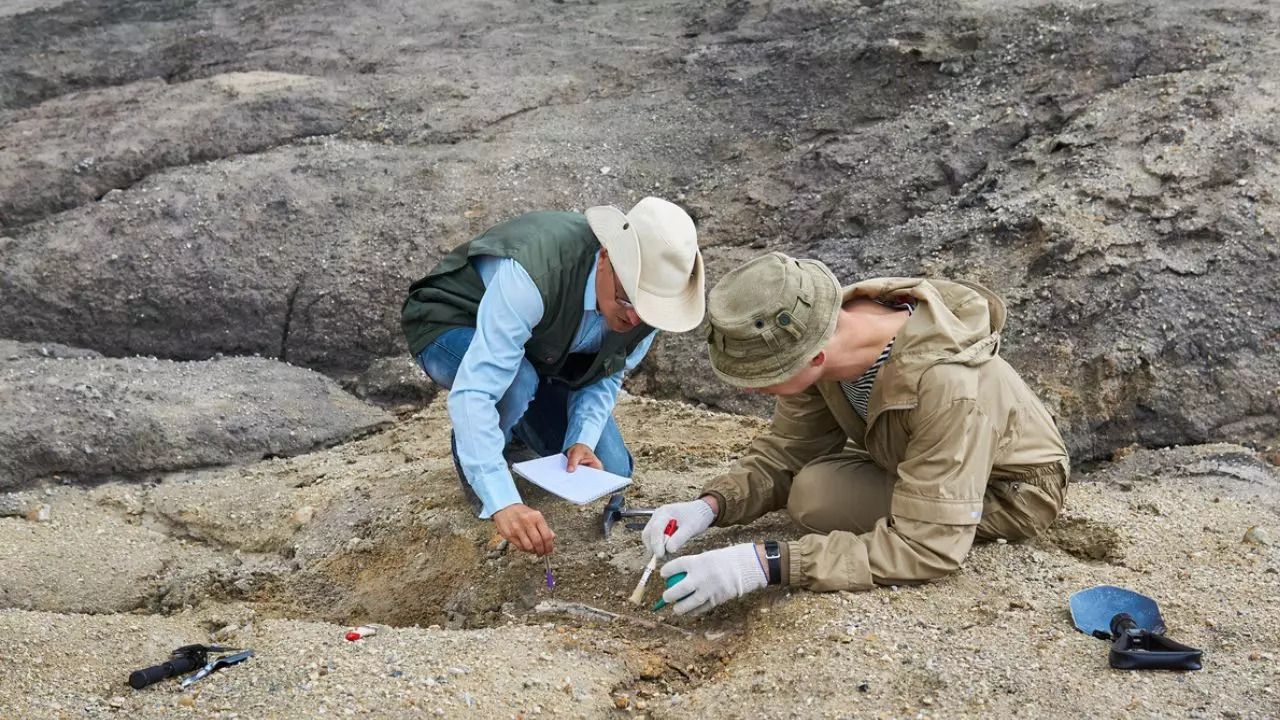
Spain: Human footprints dating back 26,000 years discovered at construction site; linked to Ice Age. (RepresentationalImage/@iStock)
In a surprising development, archaeologists in Madrid have found human and animal footprints dating back 26,000 years. The discovery was made at a construction site. Workers also discovered several ancient stone artifacts. The workers who made the discovery were involved in the development of a housing project in the Méndez Álvaro area.
This surprising discovery has led to a large-scale archaeological investigation. Now, the common construction site is a place of great historical significance. Construction work has been halted at the site due to the aforementioned discovery. It has been officially declared an Intangible Cultural Asset (BIC) to preserve this priceless relic.
Currently, a team of 30 experts, including geologists, archaeologists and palaeontologists, is ensuring that the site is properly excavated. Lead researcher Juan Sangunos has said that the team could ask Madrid City Council to declare the area an archaeological reserve for future research.
This area has reportedly been identified as a community dating back 26,000 years. Ancient footprints also indicate the presence of animals stopping in search of water. Subsequent excavations revealed that the site was more than just a pool of water.
Pilar Oñate, head of the excavation, explained to The Olive Press that this site was much more than a drinking water well, but also a “unique village”. “Something like this was not known in the centre of the Iberian Peninsula, but previously only on the Cantabrian coast and generally in cave and shelter areas, rather than in the open air,” she added.
Meanwhile, earlier, an Iron Age figurine was discovered at the bottom of a lake in Italy. It was found during ongoing works at the Gran Carro di Bolsena underwater archaeological site in Aiola, Italy. The unfinished statue, which dates back to between the 10th and 9th centuries BC, looks more like a draft than a finished work of art. However, its incomplete state still provides insights into life in Iron Age Italy.
According to a statement translated by Italy’s Superintendence of Archaeology, Fine Arts and Landscape, the clay figurine is so fresh that it “still bears the marks of the fingerprints” of its creator. The figure was most likely covered with some kind of cloth years ago, as there is an imprint of a cloth weave under its chest.
Disclaimer:
The information contained in this post is for general information purposes only. We make no representations or warranties of any kind, express or implied, about the completeness, accuracy, reliability, suitability or availability with respect to the website or the information, products, services, or related graphics contained on the post for any purpose.
We respect the intellectual property rights of content creators. If you are the owner of any material featured on our website and have concerns about its use, please contact us. We are committed to addressing any copyright issues promptly and will remove any material within 2 days of receiving a request from the rightful owner.
